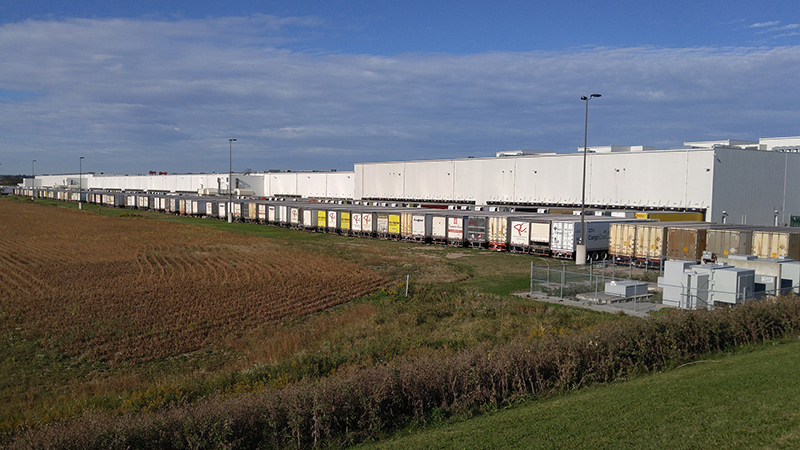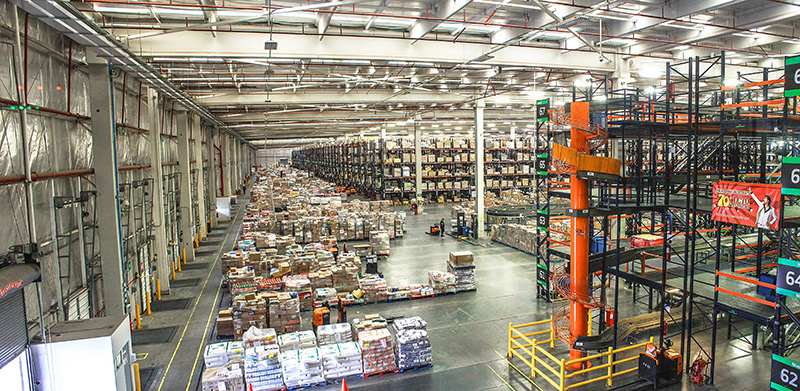The next industrial revolution is poised to change the food and beverage industry forever. But embracing the technology required for it will require sacrifices in several areas. While becoming an Industry 4.0 facility ultimately improves efficiency, technology may not be ready for this change.
Industry 4.0, also known as the Industrial Internet of Things or IIoT, incorporates technology to create a completely connected industry It collects information about processes, equipment performance, supplies and orders, and big data aggregates information from suppliers, manufacturers and customers.
Analyzing this data helps manufacturers make informed decisions. However, only 13 percent of manufacturers in the food and beverage industry use the IIoT and smart manufacturing. This minority of manufacturers are leading the way into the future through incorporating technology into their facilities.
American beer brewer New Belgium integrated smart manufacturing onto its factory floor to predict when the equipment would require maintenance. This reduced the company’s downtime by 50 percent, which increased production without raising costs.
Research and development times can decrease with Industry 4.0. Currently, confectioners are transitioning to using 3D printers to create prototypes of their proposed candies. This process only takes days compared to the weeks required by other methods. Cadbury released its aerated dairy milk chocolate bar in 2012 with this method.
The food and beverage industry faces multiple challenges from recalls to serving customer demands. Industry 4.0 will turn manufacturers into predictors instead of reactors. This will save time and money for those who invest in the technology.

Sourcing ingredients and tracing products with RFID technology dramatically help in the event of a recall. Data collection and analysis through Industry 4.0 gives many factories the advantage of responding to these problems faster. They have the information at hand and can pull items even before shipping.
Collecting data is easier now than ever. Tracking customers’ preferences is simple with online shopping. Most websites keep this information to make it easier for a customer to repeat orders. Predicting customer desires can increase profits by catering to exactly what people will buy, when they will buy it and how much they will buy.
Another way Industry 4.0 turns manufacturers into predictors is through equipment maintenance. Wireless sensors throughout a factory will collect data about performance and downtime of equipment. These sensors can determine when a piece of equipment requires replacement before it breaks down. For instance, vibrating screens require constant monitoring of their strength and tension and sensors can do this automatically. Predictive maintenance helps food manufacturers keep grains and other bulk foods flowing through the processing plant and prevents blockages from occurring. Predictive maintenance is essential to Industry 4.0 and will differentiate a business amongst the competition.
Despite its advantages, a McKinsey survey of manufacturers found only 48 percent felt ready to transition to Industry 4.0. Several barriers stand in the way of manufacturers fully embracing the IIoT for their facilities.

Deciding to transition to Industry 4.0 requires a significant investment in new equipment and employees. Many manufacturers feel unready to replace equipment that still functions well, or replace less-skilled workers with technical professionals. In many places, there is a dearth of skilled workers with the necessary qualifications.
In addition to problems with making the transition to Industry 4.0, issues also arise with its use. It’s possible to use the IIoT for too many things. This creates digital waste and unnecessary information. Often, this happens when a manufacturer assumes automation or digitizing the factory will solve human-based problems.
While integrating technology makes a facility more efficient, if production does not match demand, overproduction occurs. Food and beverage manufacturers must gather data about the demand for their products before changing production levels. For the greatest benefits, they must use all aspects of the IIoT from supplies to consumer purchases.
Like other technologies, smart manufacturing comes with hidden costs. Not only does it require an investment up front, but it also needs constant maintenance and higher-paid employees to operate well. Many manufacturers may even spend money on high-tech solutions when the investment was not necessary for the immediate problems. This only wastes money.
Bringing Industry 4.0 into a factory could take the focus off the important things that come with running a food production facility. According to the 80/20 rule, solving 20 percent of the problems results in financial gains of 80 percent. Completely changing how a facility operates creates bigger problems that can draw the focus from the smaller issues that you can solve for greater benefits.
While the food and beverage industry may not be completely ready to embrace Industry 4.0, manufacturing trends are moving in that direction. Manufacturers must decide if their facility can invest in new technology and personnel or if waiting is a more prudent option. The next industrial revolution will happen, though, and everyone in the food and beverage industry needs to be ready for it.
 Megan Ray Nichols is a freelance technical writer and the editor of Schooled By Science. She writes regularly for sites like IMPO Magazine and American Machinist. Keep in touch with Megan by following her on Twitter or subscribing to her blog.
Megan Ray Nichols is a freelance technical writer and the editor of Schooled By Science. She writes regularly for sites like IMPO Magazine and American Machinist. Keep in touch with Megan by following her on Twitter or subscribing to her blog.
Scott Ellyson, CEO of East West Manufacturing, brings decades of global manufacturing and supply chain leadership to the conversation. In this episode, he shares practical insights on scaling operations, navigating complexity, and building resilient manufacturing networks in an increasingly connected world.